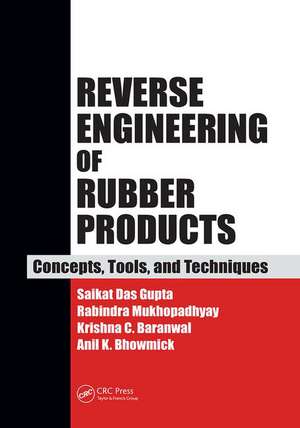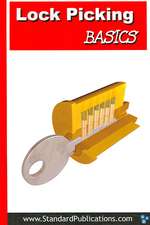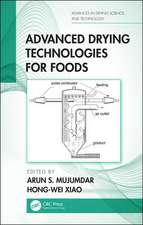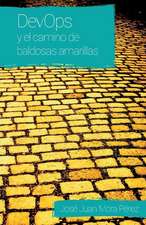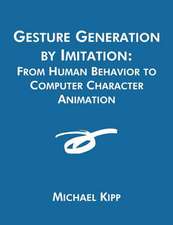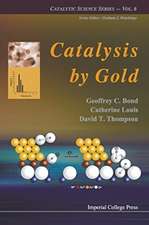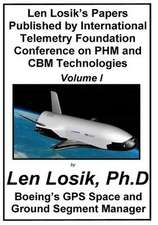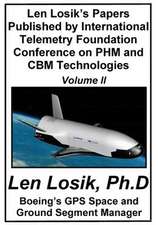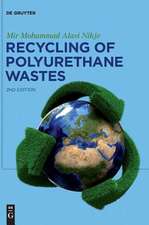Reverse Engineering of Rubber Products: Concepts, Tools, and Techniques
Autor Saikat Das Gupta, Rabindra Mukhopadhyay, Krishna C. Baranwal, Anil K. Bhowmicken Limba Engleză Paperback – 31 mar 2017
A Compendium of Chemical, Analytical, and Physical Test Methods
Organized into five chapters, the book first reviews the construction of compounding ingredients and formulations, from elastomers, fillers, and protective agents to vulcanizing chemicals and processing aids. It then discusses chemical and analytical methods, including infrared spectroscopy, thermal analysis, chromatography, and microscopy. It also examines physical test methods for visco-elastic behavior, heat aging, hardness, and other features. A chapter presents important reverse engineering concepts. In addition, the book includes a wide variety of case studies of formula reconstruction, covering large products such as tires and belts as well as smaller products like seals and hoses.
Get Practical Insights on Reverse Engineering from the Book’s Case Studies
Combining scientific principles and practical advice, this book brings together helpful insights on reverse engineering in the rubber industry. It is an invaluable reference for scientists, engineers, and researchers who want to produce comparative benchmark information, discover formulations used throughout the industry, improve product performance, and shorten the product development cycle.
| Toate formatele și edițiile | Preț | Express |
|---|---|---|
| Paperback (1) | 700.75 lei 6-8 săpt. | |
| CRC Press – 31 mar 2017 | 700.75 lei 6-8 săpt. | |
| Hardback (1) | 1939.44 lei 6-8 săpt. | |
| CRC Press – 19 sep 2013 | 1939.44 lei 6-8 săpt. |
Preț: 700.75 lei
Preț vechi: 854.57 lei
-18% Nou
Puncte Express: 1051
Preț estimativ în valută:
134.09€ • 140.29$ • 111.39£
134.09€ • 140.29$ • 111.39£
Carte tipărită la comandă
Livrare economică 03-17 aprilie
Preluare comenzi: 021 569.72.76
Specificații
ISBN-13: 9781138075252
ISBN-10: 1138075256
Pagini: 357
Ilustrații: 100; 73 Tables, black and white; 159 Illustrations, black and white
Dimensiuni: 178 x 254 x 19 mm
Greutate: 0.45 kg
Ediția:1
Editura: CRC Press
Colecția CRC Press
ISBN-10: 1138075256
Pagini: 357
Ilustrații: 100; 73 Tables, black and white; 159 Illustrations, black and white
Dimensiuni: 178 x 254 x 19 mm
Greutate: 0.45 kg
Ediția:1
Editura: CRC Press
Colecția CRC Press
Public țintă
Professional and Professional Practice & DevelopmentCuprins
Compounding Ingredients and Formulation Construction: Introduction. Elastomers: Properties, Uses, and Vulcanization. Fillers. Protective Agents. Vulcanizing Chemicals. Processing Aids. Formula Construction. Principal Chemical and Analytical Methods Used in Reverse Engineering: Chemical Analysis. Infrared Spectroscopy. Thermal Analysis. Chromatography. Atomic Absorption Spectroscopy (AAS). Microscopy and Image Analysis. Mass Spectrometry. Principal Physical Test Methods: Introduction. Visco-Elastic Behavior. Elastic Modulus. Some Special Features of General Physical Tests. Reverse Engineering Concepts: General Concepts and Examples. Formula ReconstructionSpecific Example. Numerical Problem on Reverse Engineering. Formulation Reconstruction: Case Studies: Tire Tread Cap. Tire Sidewall. Tire Inner Liner. Heat Resistance Conveyor Belt Cover Compound. Fuel Hose Cover. Rubber Seal. V-Belt Compound. Rubber Covered Rolls. Rubber Part in Rubber-Metal Bonded Ring. Non-Black Elastic Tape. Rubber Diaphragm of Audio Speaker. Rubber Sealant. Bibliography. Appendices: Statistical Aspects of Chemical Analysis. Material Properties. Conversion Factors. Nuclear Magnetic Resonance (NMR) Spectroscopy. Glossary. Index.
Notă biografică
Saikat Das Gupta is chief scientist in research and development at Hari Shankar Singhania Elastomer and Tyre Research Institute (HASETRI), India.
Rabindra Mukhopadhyay is director and chief executive at HASETRI, India, director of research and development at JK Tyre & Industries Limited, and chairman of the Indian Rubber Institute.
Krishna C. Baranwal is former executive vice president—technical at Akron Rubber Development Laboratory, Ohio.
Anil K. Bhowmick is a Professor of Eminence at the Indian Institute of Technology Kharagpur and is currently the director of the Indian Institute of Technology Patna.
Rabindra Mukhopadhyay is director and chief executive at HASETRI, India, director of research and development at JK Tyre & Industries Limited, and chairman of the Indian Rubber Institute.
Krishna C. Baranwal is former executive vice president—technical at Akron Rubber Development Laboratory, Ohio.
Anil K. Bhowmick is a Professor of Eminence at the Indian Institute of Technology Kharagpur and is currently the director of the Indian Institute of Technology Patna.
Recenzii
"Rubber is among the most customizable of materials. This fact represents a great opportunity for companies seeking to differentiate their materials and products in the marketplace, and it is the reason that development and competition in the rubber industry hinges so much on materials science. It also presents a great challenge for companies seeking to stay on top of current market trends, since a compound’s make-up is usually a trade secret. The authors of this book are authorities on the subject, and they have done a great service by bringing together this collection of valuable techniques. Readers will appreciate the convenience of having this information in a topic-focused volume, and they will benefit from the decades of experience that the authors bring to the subject."
––Will Mars, CEO, Endurica LLC and editor, Rubber Chemistry and Technology, USA
"Reverse engineering is very important. This is the first text addressing this area and will therefore be of considerable value."
—Brendan Rodgers, ExxonMobil, Texas, USA
––Will Mars, CEO, Endurica LLC and editor, Rubber Chemistry and Technology, USA
"Reverse engineering is very important. This is the first text addressing this area and will therefore be of considerable value."
—Brendan Rodgers, ExxonMobil, Texas, USA
Descriere
This unique book describes the techniques used to discover which materials and processes were used to produce a particular vulcanized rubber compound from a combination of raw rubber, chemicals, and pigments. It covers polymer identification, carbon black percent calculation, volatile separation, and ultimately the reengineering of the chemical formulation of an unknown rubber product. This is an invaluable reference for anyone who wants to gather comparative benchmark information, discover formulations used throughout the industry, improve product performance, and shorten the product development cycle.
